Gretchen Rubin's Blog
August 15, 2025
How to plan your perfect reading retreat
Recently, my sister Elizabeth and I returned from our Reading Retreat 2025, in Los Olivos, California.
This year, our yearly challenge is to “Read 25 in ’25,” so we’ve been doing many different things to spend more time reading. For instance, we’re doing Simon Haisell’s Slow Read of War and Peace, and we both did “Read 25 Day” in June. A retreat seemed like another fun way to bring more reading into our days.
Several months ago, we’d had the idea for the retreat, and we’d been trying to figure out when and where to have it.
Then I found out that I needed to travel to L.A. for work. Because I was planning to stay with Elizabeth in Encino, we decided to tack the retreat onto my trip. That way, for the two of us, we had fewer flights to book and less time spent traveling. It also eliminated the decision-fatigue of when to hold the retreat: it had to be before or after my work commitment.
We chose Los Olivos as a spot within driving distance of Elizabeth’s house; chose our hotel, The Inn at Mattei’s Tavern; booked a room; and before long, we were spending two blissful days reading.
We learned a few things:
we enjoyed taking long walks—to enjoy the scenery, to get to see the neighborhood, to get some exercise to help us stay still for readingwe appreciated staying in a place where we could walk everywhere; it was really nice not to have to get in the car for two daysit’s fun to have a same-day book—a book you start and finish in a single day. My same-day book was Nevil Shute’s A Town Like Alice (Amazon, Bookshop); Elizabeth’s same-day book was Percival Everett’s James (Amazon, Bookshop).We enjoyed it so much that on the drive back to Encino, we decided to make it a yearly tradition (which is why I’m calling it “Reading Retreat 2025”).
Next time, we want the reading retreat to be three nights long, not two. We would have really enjoyed one more day, especially given the travel time.
How to plan your own reading retreatEvery reader deserves a bit of dedicated time to enjoy a good book. Here are some ideas for planning your retreat:
At home: Try a weekend morning micro-retreat—just a few hours can feel luxurious if you treat it like a real retreat. Hide your phone, tell your family you’re off-limits, and claim your favorite reading spot.
Out and about: Read at a library, a bookstore café, or if the weather is nice, a park bench or quiet outdoor spot.
Weekend getaway: If you can swing it, a few days in a new location can really enhance your enjoyment. You don’t need to travel far, but getting out of your house removes the domestic distractions that pull you away from your book.
Whom to bring: It’s up to you! You might bring one friend, a small group, your family, or have a solo retreat. If you do bring someone along, make sure you’re on the same page (!) about your plans for reading time, conversation time, breaks, and other activities.
A few weeks ago, more than 1,000 people responded to my poll about the ideal reading retreat, and their answers were delightfully revealing.
Nearly half fantasized about a beach-house getaway, while a third preferred a cozy cabin in the woods. Seven percent preferred to stay home as long as all responsibilities were “magically handled.” The most-mentioned essentials were tea, snacks, and cozy blankets. As for company, people were split between wanting complete solitude and bringing along one close friend.
More reading for all!
The post How to plan your perfect reading retreat appeared first on Gretchen Rubin.
June 10, 2025
Build Your Summer Reading List
Summer is the perfect time to sink into a great book—or a whole series! My sister, Elizabeth Craft, and I put together this list of authors and series we love, from twisty mysteries to rich literary fiction. These are the kinds of books we’ve found ourselves reaching for on lazy afternoons and long flights—books that are easy to get lost in.
When you’re building your own summer reading list, think about the experience you want—something cozy and comforting? Epic and transporting? Light and fast? There’s no one right way to read for fun. Just follow your curiosity and make sure your list feels like a treat.
And mark your calendar for Read 25 Day on Wednesday, June 25th. As part of the Read 25 in 2025 challenge, I’m partnering with Bookshop.org for a nationwide 25-minute silent reading event, followed by conversations about the books we love. Independent bookstores around the country will help bring readers together for a shared moment of quiet and connection.
Popular Fiction Stephen King
Master of suspense, horror, and surprisingly heartfelt stories.
Start with The Shining → Kristin Hannah
Emotionally rich stories of resilience and love.
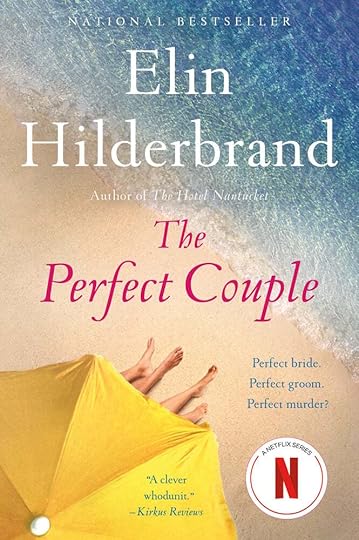
Beach reads with heart, drama, and Nantucket charm.
Start with The Perfect Couple → David Nicholls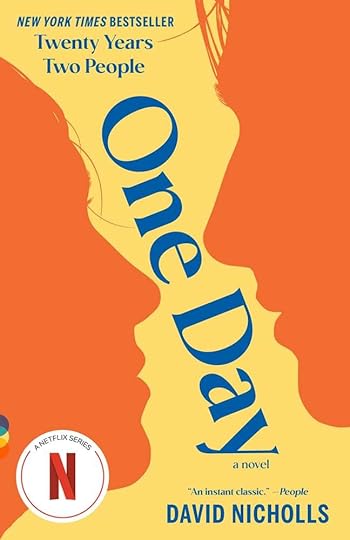
Witty, tender novels about love, growing up, and life’s curveballs.
Start with One Day → Literary Fiction Willa Cather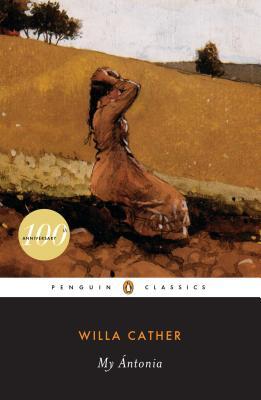
Evocative portrayals of American life and landscape.
Start with My Ántonia → Iris Murdoch
Philosophical, psychologically complex, and beautifully written.
Start with The Sea, The Sea → Graham Greene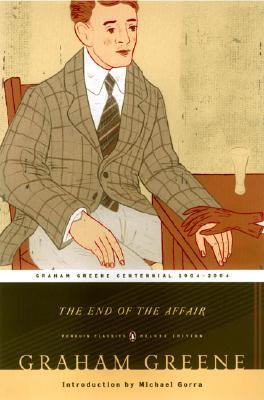
Elegant prose meets intrigue, faith, and moral conflict.
Start with The End of the Affair → Elizabeth Strout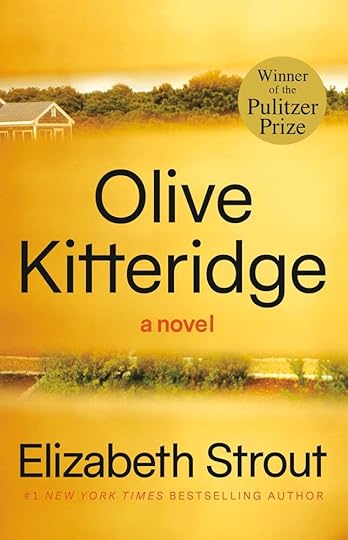
Compassionate portraits of small-town lives and inner worlds.
Start with Olive Kitteridge → Marilynne Robinson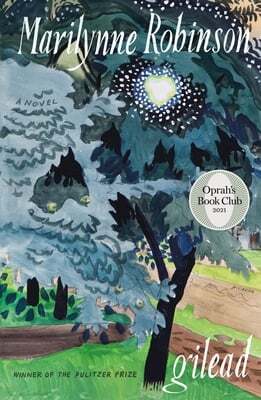
Spare, luminous fiction about grace, family, and faith.
Start with Gilead → Fantasy George R.R. MartinA Song of Ice and Fire series

Expansive, gritty, and wildly compelling fantasy epic.
Start with Game of Thrones → Octavia ButlerThe Patternist series
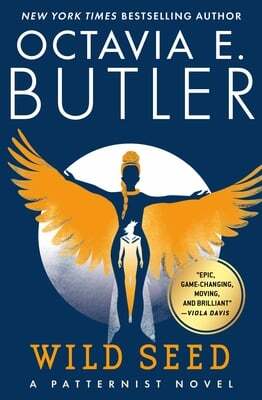
Visionary sci-fi/fantasy blend exploring power, identity, and humanity.
Start with Wild Seed → Mystery Louise PennyThe Inspector Gamache series
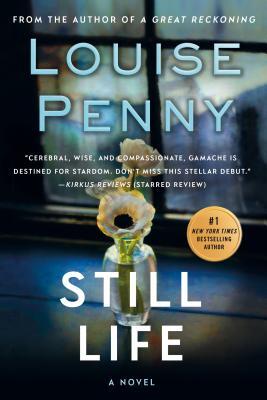
Gentle, character-driven mysteries with moral weight.
Start with Still Life → Tana FrenchThe Dublin Murder Squad series
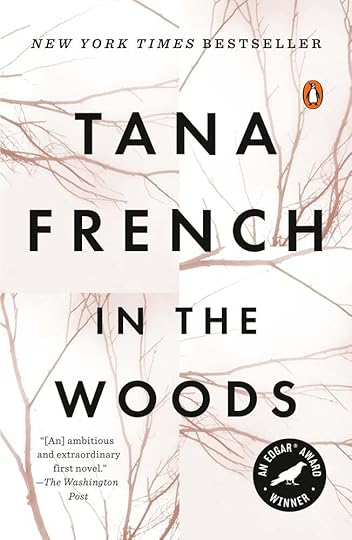
Atmospheric, layered crime novels full of psychological insight.
Start with In the Woods → Auto-fiction Karl Ove Knausgaard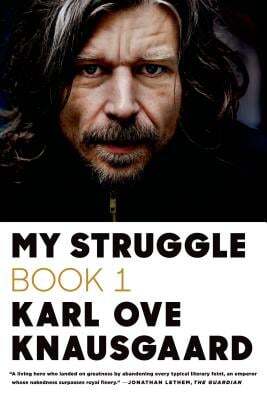
Riveting, reflective chronicles of daily life and memory.
Start with My Struggle, Book 1 → Science Fiction Martha WellsThe Murderbot Diaries series

A bot-human construct just wants to be left alone to watch media—and save the day.
Start with All Systems Red → Becky ChambersWayfarers series
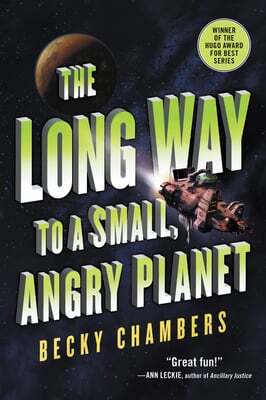
Hopeful, character-driven sci-fi with warmth and wonder.
Start with The Long Way to a Small, Angry Planet → Thrillers Ruth Ware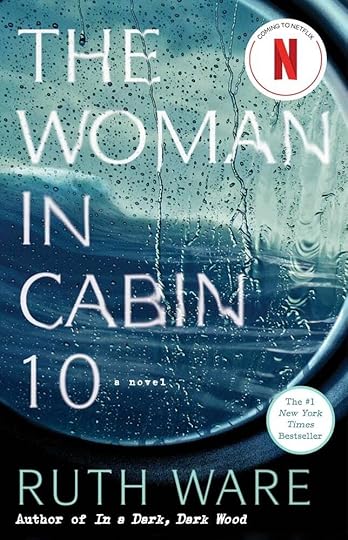
Clever, twisty thrillers with gothic flavor.
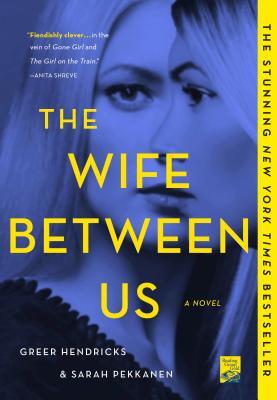
Psychological suspense with smart, fast-moving plots.
Start with The Wife Between Us →The post Build Your Summer Reading List appeared first on Gretchen Rubin.
May 20, 2025
Highlights from the “Secrets of Adulthood” Book Tour
I had a such a wonderful time on my book tour for Secrets of Adulthood. I visited fifteen cities without a single travel complication.
Every time I write a book, getting to talk with readers and listeners about it is one of my favorite things. As always, I found it so so interesting (and often surprising) to hear which “secrets” resonate most with people.
Seven random highlights, observations, and hacks from my road trip:
Gold star to those kind people who help others stow their carry-on bags. Hoisting my bag over my head was my least favorite part of the travel process, and I so appreciated the thoughtful people who helped me.Airport planners, please number (or otherwise identify) the airport doors, so it’s easy to tell someone exactly where you are.
Airline apps! It makes a huge difference to have the actual app for an airline on your phone. In fact, these days, perhaps it’s not really possible to fly without doing so?
I love a hotel-room coffee maker. LOVE. It feels so luxurious to me. Tip: If you ask at the front desk for more coffee pods, they’ll give you as many as you want, for free.
Have you ever wanted to give (or get) a giant presentation check? It might be expensive or tricky to create a custom check, but during a stop at a TV station, I saw a dry-erase version of the giant check. Who knew that such a thing existed? I can imagine that this $30 reusable “check” would be a fun prop for a school presentation, scout event, celebration, or fundraiser.
In the past, when I’ve visited a city for just one night, I haven’t made any effort to see friends. It just felt too complicated. But because maintaining friendships is such a high value for a happier life, these days, I’m trying to push myself to make it work to see friends along the way. On this tour, I stayed overnight with law-school friends in Tulsa, and it was one of the highlights of my tour.
Gratitude is an essential element of a happier life, but it can be so easy to take positive aspects of our lives for granted, and forget to feel grateful. This tour reminded me to be grateful for the fact that I live in a city with three major airports that provide so many direct flights (though, true, Newark is having some serious issues right now) as well as Amtrak and Metro-North trains—infrastructure that makes it much easier to go places. I rarely think about it, and for someone who travels frequently, it’s actually a tremendous luxury.
Many writers don’t like the travel-and-appearance part of publishing a book. I feel lucky that I enjoy it so much. Many thanks to all the readers and listeners who came to events along the way—I had a great time.
The post Highlights from the “Secrets of Adulthood” Book Tour appeared first on Gretchen Rubin.
May 7, 2025
Gretchen Rubin’s Recommendations: Book Gifts for New Grads
It’s graduation season. Here are some of my favorite books for any of the graduates in your life–or for yourself.
This post includes products that I believe in and love myself. It also includes affiliate links , meaning I will receive a commission if you decide to make a purchase from these links. This never comes at any cost to you.
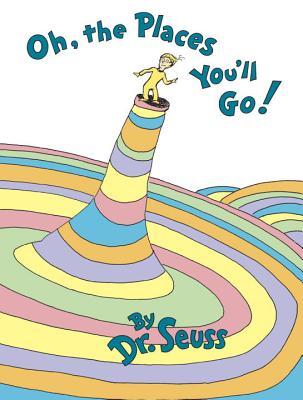 Oh the Places You'll Go by Dr. Seuss
Oh the Places You'll Go by Dr. Seuss The classic book to give a graduate–I love the whimsy and nostalgia. I can still remember when I first read this book.
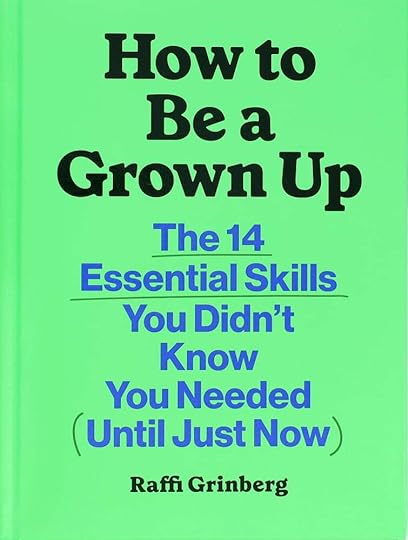 How to Be a Grown Up by Raffi Grinberg
How to Be a Grown Up by Raffi Grinberg Based on the wildly popular “Adulting 101” course at Boston College, this book will teach you everything you probably didn’t learn in your formal education.
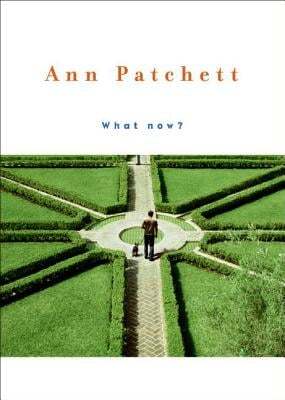 What Now? by Ann Patchett
What Now? by Ann Patchett “‘What now?’ represents our excitement and our future, the very vitality of life.” In this book from her Sarah Lawrence commencement speech, renowned novelist Ann Patchett highlights the possibilities of the unknown.
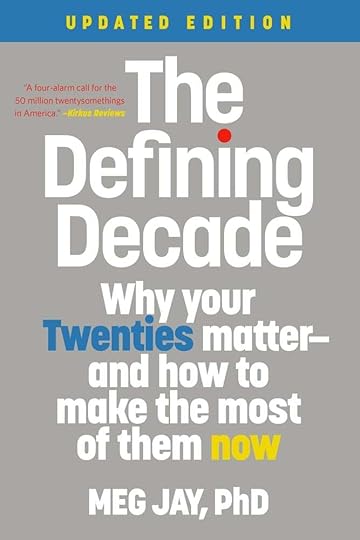 The Defining Decade by Meg Jay
The Defining Decade by Meg Jay A listener suggested that I read this book about the 20-something decade, and I did–and I loved it. More significant: my 20-something daughter Eliza also loved it, and has given it to several friends.
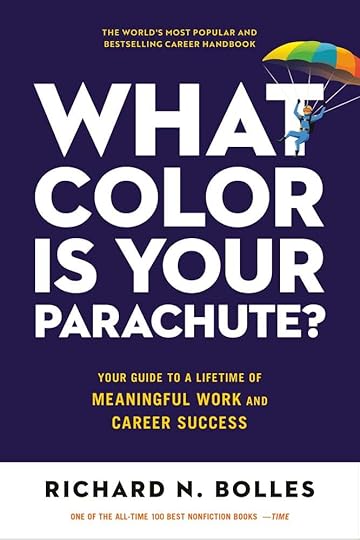 What Color Is Your Parachute? by Richard N. Bolles
What Color Is Your Parachute? by Richard N. Bolles This classic has been in print for decades. It gives you tools to discover the work, and life, most meaningful to you.
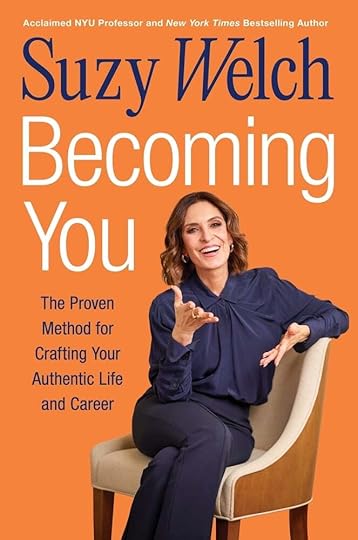 Becoming You by Suzy Welch
Becoming You by Suzy Welch This book helps you understand yourself–your values, your aptitudes, and your interests. Self-knowledge is essential if you want to build a meaningful life.
 Secrets of Adulthood by Gretchen Rubin
Secrets of Adulthood by Gretchen Rubin In this short book, I write the “secrets of adulthood” that I’ve learned, through time and experience, about dealing with the perplexities of life.
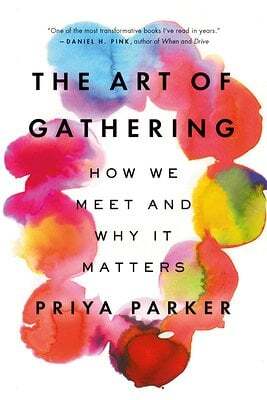 The Art of Gathering by Priya Parker
The Art of Gathering by Priya Parker Community and friendships are a key pillar to happiness. This book provides a guide to elevate every gathering.
 Getting to Yes by Roger Fisher, William Ury, Bruce Patton
Getting to Yes by Roger Fisher, William Ury, Bruce Patton Learning to work with other people is a critical part of life and it’ll be even easier with practical tips to prevent and resolve any conflicts that arise.
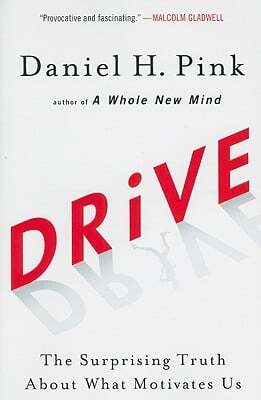 Drive by Dan Pink
Drive by Dan Pink Understanding what motivates you is key to figuring out how to live a happy life.
shop the listThe post Gretchen Rubin’s Recommendations: Book Gifts for New Grads appeared first on Gretchen Rubin.
April 29, 2025
Why Whimsy Is Having a Moment
I’m a huge fan of whimsy. Whimsy makes ordinary objects feel special; it makes everyday moments feel memorable; it adds playfulness and energy to life.
So I’m always delighted to discover some touch of whimsy–a robot vacuum named Cleanopatra, googly eyes on a train car (thank you, Boston), a Tupperware container that warns: Steal this and suffer.
I’ve included many touches of whimsy in my apartment. For instance, I have three miniature landscapes–a secret garden set in a bookshelf, a mermaid lagoon set in a different bookshelf, and best of all, a mountain scene set in a kitchen cabinet. I love seeing visitors’ surprise when they open the door to take a glass or a plate, and instead confront this tiny scene.
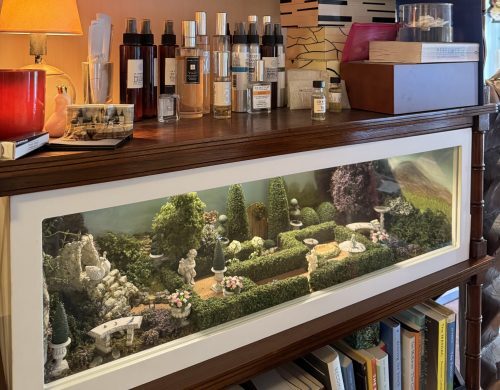
Moments of whimsy make us laugh; surprise us where we expect the ordinary; add a humorous touch to reminders, rules, and reprimands; and show us that life doesn’t always have to be serious.
Whimsy appears in the most unlikely places–including very formal, rule-bound places. The research university MIT has a reputation for being serious and rigorous–but each year, the school releases its college-acceptance decisions on March 14 (Pi Day). Whenever I return to Yale Law School, I look for the stone carvings above the main door that show students dozing over their books as a professor yells, “Wake up!” And, in one of my favorite examples of whimsy, my beloved state of Nebraska chose “Honestly, it’s not for everyone” as its unconventional tourist slogan.
What is whimsy, exactly?Whimsy is the addition of some imagination and surprise to daily life.
It might show up in a goofy name for an event on your calendar or how you decorate your desk.
For novelty lovers, something unexpected can make familiar routine feel more energizing. For Rebels//–people who resist rigidity and dislike being told what to do–whimsy might even feel like a bit of welcome defiance when it seems like everyone expects maximum efficiency at all times.
Why we reach for whimsyI remember seeing a photo of one family’s household rules. The heading read, in large capital letters: HEINOUS INFRACTIONS. Beneath it was a list of entirely ordinary chores–clean up your dishes, pick up your shoes, no throwing balls in the living room–presented in absolutely dire language. It worked!
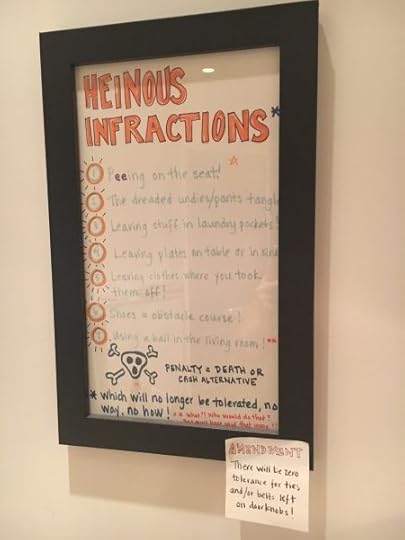
The whimsy of wrapping the rules in such melodramatic terms made the message far less annoying.
Recently, whimsy seems to be having a moment. It has popped up in online conversations, design trends, and seemingly just about everywhere.
Last month, when I asked people to share whimsical things they do, responses poured in. The answers ranged from keeping bubbles by the door to baking elaborate gingerbread houses to making up personalized songs about family members.

As reading this list demonstrates, it’s tremendously cheering to consider examples of whimsy.
Whimsy is an impulse toward delight. In The Marriage of Heaven and Hell, William Blake wrote “Energy is Eternal Delight.” And I would flip that observation to say, “Delight is Energy.”
The post Why Whimsy Is Having a Moment appeared first on Gretchen Rubin.
April 25, 2025
Why Whimsy Is Having a Moment
I’m a huge fan of whimsy. Whimsy makes ordinary objects feel special; it makes everyday moments feel memorable; it adds playfulness and energy to life.
So I’m always delighted to discover some touch of whimsy–a robot vacuum named Cleanopatra, googly eyes on a train car (thank you, Boston), a Tupperware container that warns: Steal this and suffer.
I’ve included many touches of whimsy in my apartment. For instance, I have three miniature landscapes–a secret garden set in a bookshelf, a mermaid lagoon set in a different bookshelf, and best of all, a mountain scene set in a kitchen cabinet. I love seeing visitors’ surprise when they open the door to take a glass or a plate, and instead confront this tiny scene.

Moments of whimsy make us laugh; surprise us where we expect the ordinary; add a humorous touch to reminders, rules, and reprimands; and show us that life doesn’t always have to be serious.
Whimsy appears in the most unlikely places–including very formal, rule-bound places. The research university MIT has a reputation for being serious and rigorous–but each year, the school releases its college-acceptance decisions on March 14 (Pi Day). Whenever I return to Yale Law School, I look for the stone carvings above the main door that show students dozing over their books as a professor yells, “Wake up!” And, in one of my favorite examples of whimsy, my beloved state of Nebraska chose “Honestly, it’s not for everyone” as its unconventional tourist slogan.
What is whimsy, exactly?Whimsy is the addition of some imagination and surprise to daily life.
It might show up in a goofy name for an event on your calendar or how you decorate your desk.
For novelty lovers, something unexpected can make familiar routine feel more energizing. For Rebels//–people who resist rigidity and dislike being told what to do–whimsy might even feel like a bit of welcome defiance when it seems like everyone expects maximum efficiency at all times.
Why we reach for whimsyI remember seeing a photo of one family’s household rules. The heading read, in large capital letters: HEINOUS INFRACTIONS. Beneath it was a list of entirely ordinary chores–clean up your dishes, pick up your shoes, no throwing balls in the living room–presented in absolutely dire language. It worked!

The whimsy of wrapping the rules in such melodramatic terms made the message far less annoying.
Recently, whimsy seems to be having a moment. It has popped up in online conversations, design trends, and seemingly just about everywhere.
Last month, when I asked people to share whimsical things they do, responses poured in. The answers ranged from keeping bubbles by the door to baking elaborate gingerbread houses to making up personalized songs about family members.

As reading this list demonstrates, it’s tremendously cheering to consider examples of whimsy.
Whimsy is an impulse toward delight. In The Marriage of Heaven and Hell, William Blake wrote “Energy is Eternal Delight.” And I would flip that observation to say, “Delight is Energy.”
The post Why Whimsy Is Having a Moment appeared first on Gretchen Rubin.
March 17, 2025
Gretchen Rubin’s Recommendations: Making Organizing Simpler
Getting organized doesn’t have to be complicated. The best organizing systems make life easier, not harder. The key is to focus on simple, sustainable solutions—items that make tidying up easier, help us stay on top of daily tasks, and reduce decision fatigue.
This post includes products that I believe in and love myself. It also includes affiliate links , meaning I will receive a commission if you decide to make a purchase from these links. This never comes at any cost to you.
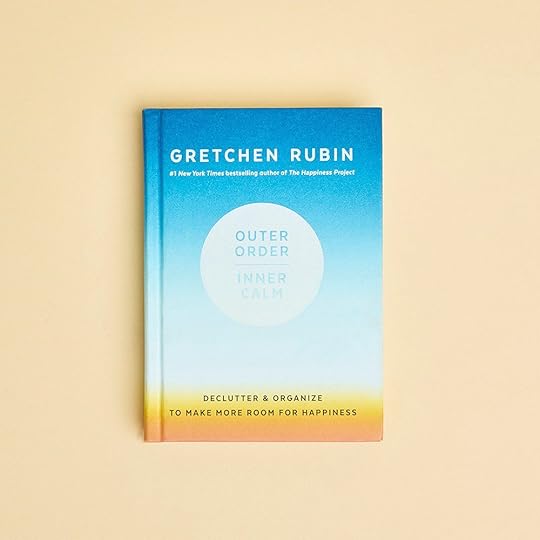 Outer Order, Inner Calm
Outer Order, Inner Calm I can’t help it, it’s my favorite book about organizing!
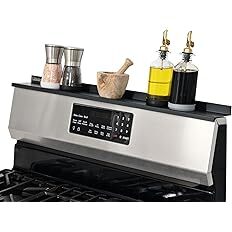 Simple stove shelf
Simple stove shelf This magnetic stove shelf keeps kitchen essentials out of the way, but within arm’s reach.
 Label maker
Label maker How cute is this compact little label maker? Labels provide visual clarity and a sense of structure. Plus they let other people know where things go, even when you’re not there to tell them.
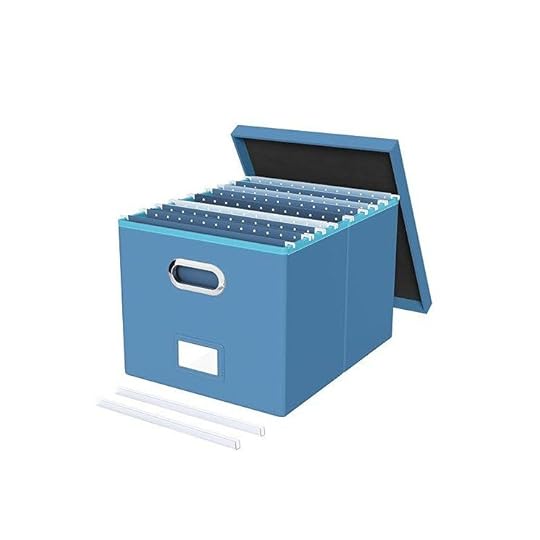 Bank box
Bank box Everyone in our family has one of these with folders for each year. It’s where we keep important things we want to save so we always know where they are.
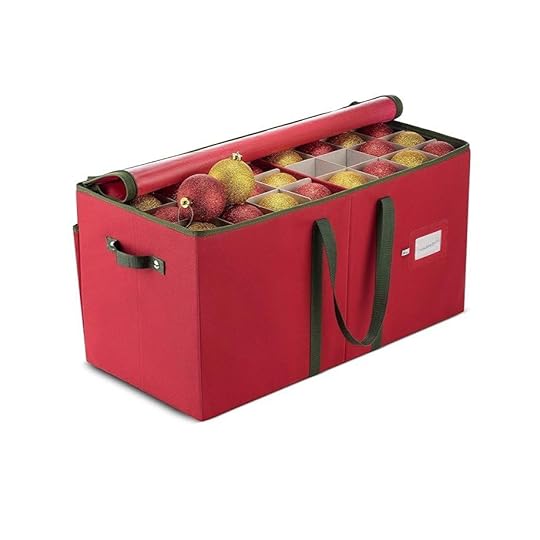 Ornament box
Ornament box Storing items that are important, but used rarely, can be a challenge. Investing in an organized storage system is often worth it.
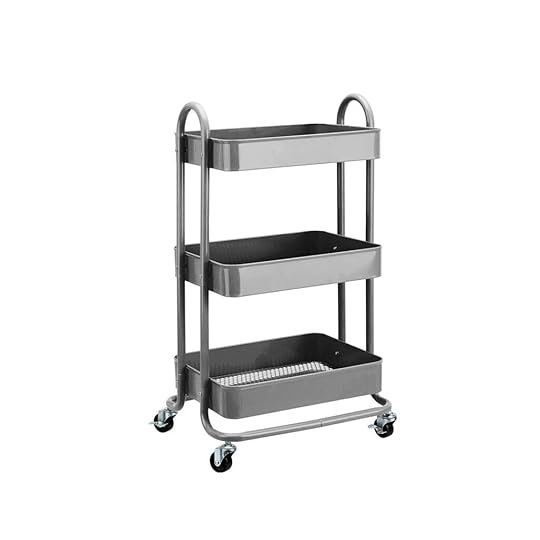 3-tier cart
3-tier cart I use this cart for my watercolors, and I love it. All my materials are accessible and organized, and I can easily roll the cart away when necessary.
 Chalkboard labels and markers
Chalkboard labels and markers These labels are erasable and reusable. Perfect for spaces and containers that serve different functions at different times, and more durable than a sticky note.
The post Gretchen Rubin’s Recommendations: Making Organizing Simpler appeared first on Gretchen Rubin.
Gretchen Rubin Guide: Make Organizing Simpler
Getting organized doesn’t have to be complicated. The best organizing systems make life easier, not harder. The key is to focus on simple, sustainable solutions—items that make tidying up easier, help us stay on top of daily tasks, and reduce decision fatigue.
This post includes products that I believe in and love myself. It also includes affiliate links , meaning I will receive a commission if you decide to make a purchase from these links. This never comes at any cost to you.
 Outer Order, Inner Calm
Outer Order, Inner Calm I can’t help it, it’s my favorite book about organizing!
 Simple stove shelf
Simple stove shelf This magnetic stove shelf keeps kitchen essentials out of the way, but within arm’s reach.
 Label maker
Label maker How cute is this compact little label maker? Labels provide visual clarity and a sense of structure. Plus they let other people know where things go, even when you’re not there to tell them.
 Bank box
Bank box Everyone in our family has one of these with folders for each year. It’s where we keep important things we want to save so we always know where they are.
 Ornament box
Ornament box Storing items that are important, but used rarely, can be a challenge. Investing in an organized storage system is often worth it.
 3-tier cart
3-tier cart I use this cart for my watercolors, and I love it. All my materials are accessible and organized, and I can easily roll the cart away when necessary.
 Chalkboard labels and markers
Chalkboard labels and markers These labels are erasable and reusable. Perfect for spaces and containers that serve different functions at different times, and more durable than a sticky note.
The post Gretchen Rubin Guide: Make Organizing Simpler appeared first on Gretchen Rubin.
Gretchen Rubin’s Recommendations: Organization Using What You Already Have
In Outer Order, Inner Calm, I write about how clearing clutter and creating order can make us feel lighter, happier, and more focused. But getting organized doesn’t mean rushing out to buy new bins or storage systems. Often, the best place to start is by taking inventory and figuring out how to use what we already have.
Actually know what you have
How many times have you bought a new notebook only to find a stack hiding in a drawer? Or picked up more batteries because you weren’t sure if you had any at home? Before bringing in anything new, take inventory. Open every drawer, look through every shelf, and make sure you know what you already own.
Keep things where you use themOrganization isn’t just about tidiness—it’s about making life easier. The most useful things are the ones that are easy to grab when we need them. If you’re always hunting for scissors, don’t keep them in a desk drawer across the house—store a pair where you actually use them.
A few easy adjustments:
Store your keys by the door instead of tossing them onto different surfaces.Keep a small basket of office supplies where you work, rather than stashed in a deep drawer.Place a laundry basket in the bathroom if that’s where clothes tend to accumulate.Love it, use it, or let it goIf you don’t love it and don’t use it, why keep it? I ask myself: “Do I need it? Do I use it? Do I love it?” If not, I consider donating it.
To help decide, ask yourself:
Have I used this in the last year?Would I buy this again today?Is this taking up space that could be better used for something I actually need?Get creative with what you already haveOnce you’ve gone through these steps, you may find you don’t need to buy new organizers or storage solutions at all—you don’t have anything that needs to be organized. Beyond that, you can repurpose everyday items to help keep things in order. You might even have quite a bit of fun in the process. For instance:
Turn a wall or whiteboard into a visual to-do list. Use washi tape and Post-its to create a flexible, movable calendar or task board. Jot down tasks or appointments and move them around as plans shift—no fancy planner required.Repurpose jars and boxes. Mason jars can hold pens, kitchen utensils, or makeup brushes. A shoebox can become a drawer divider, and an old gift box can store chargers and cords neatly.Use an old magazine holder in new ways. Turn it on its side to store cutting boards or foil and plastic wrap in the kitchen. Stand it upright to keep notebooks or mail organized.Label with what you have. Instead of buying new labels, use masking tape and a Sharpie or cut up an old cereal box into DIY tags for storage bins.Make a “put-away bin.” Designate a basket or tote bag as a home for stray items that need to go back to their places—great for tidying up quickly.When we take stock, declutter, and get creative, we often realize we don’t need to buy anything new to feel more organized. We just need to use what we already have—more intentionally.
See Gretchen’s Other Recommendations ARCHIVING AND SAVING SAVE TIME AND IMPROVE FOCUS MAKE YOUR LIFE EASIER Simplify OrganizationThe post Gretchen Rubin’s Recommendations: Organization Using What You Already Have appeared first on Gretchen Rubin.
Gretchen Rubin’s Tips on Organizing: Use What You Already Have
In Outer Order, Inner Calm, I write about how clearing clutter and creating order can make us feel lighter, happier, and more focused. But getting organized doesn’t mean rushing out to buy new bins or storage systems. Often, the best place to start is by taking inventory and figuring out how to use what we already have.
Actually know what you have
How many times have you bought a new notebook only to find a stack hiding in a drawer? Or picked up more batteries because you weren’t sure if you had any at home? Before bringing in anything new, take inventory. Open every drawer, look through every shelf, and make sure you know what you already own.
Keep things where you use themOrganization isn’t just about tidiness—it’s about making life easier. The most useful things are the ones that are easy to grab when we need them. If you’re always hunting for scissors, don’t keep them in a desk drawer across the house—store a pair where you actually use them.
A few easy adjustments:
Store your keys by the door instead of tossing them onto different surfaces.Keep a small basket of office supplies where you work, rather than stashed in a deep drawer.Place a laundry basket in the bathroom if that’s where clothes tend to accumulate.Love it, use it, or let it goIf you don’t love it and don’t use it, why keep it? I ask myself: “Do I need it? Do I use it? Do I love it?” If not, I consider donating it.
To help decide, ask yourself:
Have I used this in the last year?Would I buy this again today?Is this taking up space that could be better used for something I actually need?Get creative with what you already haveOnce you’ve gone through these steps, you may find you don’t need to buy new organizers or storage solutions at all—you don’t have anything that needs to be organized. Beyond that, you can repurpose everyday items to help keep things in order. You might even have quite a bit of fun in the process. For instance:
Turn a wall or whiteboard into a visual to-do list. Use washi tape and Post-its to create a flexible, movable calendar or task board. Jot down tasks or appointments and move them around as plans shift—no fancy planner required.Repurpose jars and boxes. Mason jars can hold pens, kitchen utensils, or makeup brushes. A shoebox can become a drawer divider, and an old gift box can store chargers and cords neatly.Use an old magazine holder in new ways. Turn it on its side to store cutting boards or foil and plastic wrap in the kitchen. Stand it upright to keep notebooks or mail organized.Label with what you have. Instead of buying new labels, use masking tape and a Sharpie or cut up an old cereal box into DIY tags for storage bins.Make a “put-away bin.” Designate a basket or tote bag as a home for stray items that need to go back to their places—great for tidying up quickly.When we take stock, declutter, and get creative, we often realize we don’t need to buy anything new to feel more organized. We just need to use what we already have—more intentionally.
See Gretchen’s Other Recommendations ARCHIVING AND SAVING SAVE TIME AND IMPROVE FOCUS MAKE YOUR LIFE EASIER Simplify OrganizationThe post Gretchen Rubin’s Tips on Organizing: Use What You Already Have appeared first on Gretchen Rubin.



